More comprehensive professional introduction of special grease (1)
2019-10-15
Introduction
According to the thickener, it can be divided into two types: soap-based fat and non-soap-based fat.
Metal soaps such as lithium, sodium, calcium, aluminum, and zinc are commonly used as thickeners for soap-based fats. Metal soaps such as potassium, barium, lead, and manganese are also used. Non-soap-based thickeners use graphite, carbon black, asbestos, and synthetics (such as polyurea-based and bentonite). They can be divided into general greases and special greases according to their uses. The latter is used in tractors, railway locomotives, marine machinery, oil drilling machinery, valves, etc. The main quality indicators are drip point, penetration, ash and moisture. The indexes used to evaluate the stability of grease colloids are oil separation test and rolling bearing performance test.
The roller test is a test method for measuring the change in consistency under the action of rolling. The fluidity test is a test method to evaluate the pumpability of grease at low temperatures. Water resistance test is a test method to evaluate the resistance of grease to water elution. Colloidal stability is the performance of the grease to keep the colloid stable during storage and use, and the liquid mineral oil does not precipitate from the fat. Mechanical stability refers to the resistance of grease to changes in consistency under mechanical working conditions.
Ball bearing torque test is a test method to evaluate the low temperature performance of grease. Grease is a stable solid or semi-solid product composed of a thickener dispersed in a liquid lubricant. Additives and fillers can be added to improve certain characteristics of the grease. At normal temperature, the grease can adhere to the vertical surface without loss, and can work in open or poorly sealed friction parts. It has an irreplaceable holding point for other lubricants.
Generally speaking, greases with the same soap base are more compatible. Organoclay bases are incompatible with other bases. Therefore, many parts of automobiles and construction machinery use grease as the lubricating material, which is often called butter!
Effect
The role of grease is mainly to lubricate, protect and seal.
Most greases are used for lubrication and are called antifriction greases. Anti-friction grease is mainly used to reduce mechanical friction and prevent mechanical wear. At the same time, it also plays a protective role against metal corrosion and a seal against dust. Some greases are mainly used to prevent metal from rusting or corroding. They are called protective greases. For example, industrial petroleum jelly has a small number of greases for sealing purposes, called sealing greases, such as thread grease. Most greases are semi-solid materials with unique fluidity.
The working principle of the grease is that the thickener keeps the oil in the position where it needs to be lubricated. When there is a load, the thickener releases the oil, thus playing a lubrication role.
At normal temperature and at rest, it looks like a solid, can keep its shape without flowing, and can adhere to metal without slipping. When high temperature or external force exceeds a certain limit, it can flow like a liquid. When the grease is sheared by the moving parts in the machine, it can generate flow and lubricate, reducing friction and wear between moving surfaces. When the shearing action stops, it can restore a certain consistency, and this special fluidity of the grease determines that it can be lubricated in places that are not suitable for use with lubricating oil. In addition, because it is a semi-solid substance, its sealing effect and protection are better than that of lubricating oil.
Classification
The types of grease are complex and the grades are numerous, so the classification is very important. The original GB501-65 巳, which was classified according to thickeners, could not meet the requirements for the development and use of grease, and it was announced to be abolished on April 1, 1988. GB7631.8-90 provides a system for classifying TBES greases according to the requirements of use. This classification system equivalently uses the ISO classification method and has replaced GB501-65. The production, sales and use of grease have not been fully incorporated into the new classification system. Therefore, in order to explain the specific differences between the old and new classification systems, it is necessary to compare the old and new classification systems.
GB501-65 is classified according to the composition of thickeners, that is, it is divided into four types: soap-based fats, hydrocarbon-based fats, inorganic fats and organic fats.
Soap groups are divided into single soap groups, such as calcium group, sodium group, lithium group, aluminum group, barium group, lead group and other groups; mixed soap groups such as calcium sodium group, calcium aluminum group , Lead-barium-based, aluminum-barium-based; composite soap-based, such as composite calcium-based, composite aluminum-based and other groups. Various greases in the same group are divided into industrial, marine, etc. groups according to purpose or use.
The names of greases in the old classification are in the following order:
Grade-endnote-group name or level name-category
Example: No. l synthetic calcium-based grease (codenamed ZG-lH)
Of which: No. 1--brand (cone penetration series number)
Synthesis-endnote (synthetic fatty acid)
Calcium-based group (thickener)
Grease-category (grease)
The designation of the grease is as follows:
Class number-group number-level number-brand-endnote number
Example: Z J——4 S (No. 4 graphite hydrocarbon-based grease)
Among them: Z--class number (fixed code)
J--group number (thickener is hydrocarbon group)
4--brand (cone penetration degree serial number)
S--Endnote (containing graphite filler)
Grease is classified according to the composition of the thickener, which has a greater limitation. The same thickener can be used to produce many types of greases with different properties. Even if the grease is produced by different types of thickeners, its performance is often difficult. Distinguish accurately. Therefore, the classification of users by thickeners will be confusing, and it is difficult to choose without using experience and finding corresponding standards. The conditions of use of the grease cannot be seen from the grouping, naming and code. You must look up the grease standard of this code again. Therefore, it is difficult for users to select correctly, and it is easy to misuse and cause lubrication accidents.
2. New classification GB 7631.8 a 90
I. scope of application
This classification standard is applicable to all kinds of grease for various equipment, mechanical parts, vehicles, etc. It is not suitable for special purpose grease. That is to say, it is only applicable to the grease that functions as a lubricating agent, and it is not applicable to the special grease that functions as a seal and protection. This classification criterion is classified according to operating conditions. In this standard classification system, a grease corresponds to a code, which corresponds to the most stringent operating conditions (temperature, water pollution, load conditions, etc.) of the grease in the application. In fact, GB7631.8-90 is just a code for providing grease grouped by operating conditions, and this code is composed of 5 capital English letters.
Second, the code used
(1) L is the category code of lubricant and related products.
(2) Each type of grease is represented by a set of (5) uppercase English letters, and each letter has its specific meaning.
(3) Classification of grease
(4) Supplementary note-indication of water pollution
In the above classification table, the operating temperature and load have been described clearly, but the water pollution has not been clearly stated. In order to determine the letter H (water pollution children also specify a few more severe cases r, use different letters.
(5) Illustration
General lithium-based grease, according to its standards:
Operating temperature: -20 ℃ -120 ℃
Water pollution: the amount of water leakage is not more than 10%, which means that it can withstand water washing; the anticorrosive property is level l, which can prevent rust under fresh water conditions.
Extreme pressure: There is no extreme pressure performance index in the index, that is, there is no extreme pressure.
From the above:
The letter 1 is the fixed code for grease, and the code is X; `
Minimum operating temperature: one 20 ℃, the letter 2 is B;
Maximum operating temperature; 120 ℃, letter 3 is C;
Environmental conditions: rust resistance under water washing, letter 4 is H;
Load conditions: non-extreme pressure type, letter 5 is A;
Consistency grade: No. 1, No. 2, No. 3.
Therefore, the general lithium-based grease classification code is: L-XBCHA1,2,3.
Comparison of two classification standards
There is no comparison between these two classification standards, but because GB501-65 is used for a long time, the production and sales of grease have not been fully incorporated into the new system. In order to explain the problem more clearly and deepen the understanding of the new standard system, let's make a simple comparison.
l) Classification principle
GB501-65 is classified according to the thickener, and the first letter of the alphabet of the soap base grease is used as a symbol to group.
GB7631.S-90 is classified according to the operating conditions when grease is applied.
2) Naming and Code
The naming and code of GB501-65 is very detailed. From the name, you can know the type of thickener, but the special grease sometimes does not see the type of thickener. The code can also reflect the type and brand of thickener.
GB7631.8-90 only reflects the code of grease. It is composed of 5 English letters. The thickener type is not visible from the code, but it can reflect the consistency grade.
3) Scope of application
GB501-65 can be applied to all kinds of grease, whether it is lubrication, sealing or protection. A grease is named, coded and classified according to this. In principle, a group, name and code can be given. Therefore, the more grease grouped, named and coded by GB501-65, the more difficult it is for users to choose.
GB7631.8-90 is only applicable to lubrication-based greases, greases for other uses are not applicable to this standard.
4) Selection effect
There are many types of greases named by GB501-65. There is a name for each grease. The user cannot see the conditions of use from the name and code. If you only know the conditions of use, it is difficult to choose grease. You must look at the grease. Standards and empirical decisions.
GB7631.8-90 is classified according to the operating conditions of grease use. As long as you remember the classification table, you can choose grease according to the classification. At the same time, the user can choose according to actual needs, because there are several greases that meet the conditions of use. As long as greases made of different thickeners meet this operating condition, they are classified into this category for users to choose fully.
5) Simplify breed naming
GB501-65 cannot simplify the naming of varieties, and it will only increase.
GB7631.8-90 can simplify the naming of varieties. Greases are classified according to the use conditions. The varieties belonging to this category can be grouped into a classification number.
Basic component
Grease is mainly composed of thickener, base oil and additives. The content of thickener in general grease is about 10% -20%, the content of base oil is about 75% -90%, and the content of additives and fillers is below 5%.
l. base oil
The base oil is the dispersion medium in the grease dispersion system, and it has a great influence on the performance of the grease. In general, greases mostly use medium-viscosity and high-viscosity petroleum lubricating oils as base oils. Some greases are also used as base oils to meet the needs of mechanical lubrication and sealing under severe conditions, such as ester oils and silicone oils. , Poly wee-olefin oil, etc.
2. Thickener
Thickener is an important component of grease. The thickener is dispersed in the base oil and forms the structural skeleton of the grease, so that the base oil is adsorbed and fixed in the structural skeleton. The water resistance and heat resistance of grease are mainly determined by the thickener. There are two main types of thickeners used to make grease. Soap-based thickeners (ie, fatty acid metal salts) and non-soap-based thickeners (hydrocarbon, inorganic, and organic).
Soap-based thickeners are divided into three types: single soap-based (such as calcium-based grease), mixed soap-based (such as calcium-sodium-based grease), and complex soap-based (such as complex-calcium-based grease). 90% of grease is made with soap-based thickener.
3. Additives and fillers
One type of additive is what a grease needs, called a peptizer, which makes the combination of oil and soap more stable, such as glycerin and water. Once water is lost in calcium-based grease, its structure is completely destroyed, and it cannot form fat. For example, glycerin in sodium-based grease can adjust the consistency of fat. The other additives are the same as those in lubricating oils, such as anti-oxidants, anti-wear and rust inhibitors, but the amount is generally higher than that in lubricating oils. Such as phosphate ester, ZDDP, Elco extreme pressure antiwear agent, compounding agent, dropping point enhancer, etc. Sometimes, in order to improve the ability of the grease to resist loss and enhance lubrication, graphite, molybdenum disulfide, and carbon black are often added as fillers.
User guides
Product types that can be replaced by grease: Lithium-based grease, calcium-based grease, aluminum-based grease, composite lithium-based grease, composite aluminum-based grease, high-temperature grease, low-temperature grease wheel bearing grease, multifunctional grease, electric motorcycle grease , Insulating grease, bearing grease, grease for O-rings. Under the following conditions, it is recommended to use Super Lube high temperature extreme pressure grease instead of Super Lube multifunctional synthetic grease: The operating temperature is high. When the operating temperature exceeds 260 degrees, most of the base oil will evaporate, which cannot form sufficient lubricating film strength. Need to use some solid additives such as lead, aluminum, copper and molybdenum. Main application environment: high temperature furnace, automatic welding equipment and pure oxygen environment. Although Super Lube is difficult to burn. But pure oxygen environment will accelerate its oxidation. If Super Lube Multifunctional Synthetic Grease is used in a pure oxygen environment, it will ignite spontaneously. Such situations as: oxidation welding equipment, medical equipment, diving navigation breathing system, etc., please use our high temperature extreme pressure grease.
According to the thickener, it can be divided into two types: soap-based fat and non-soap-based fat.
Metal soaps such as lithium, sodium, calcium, aluminum, and zinc are commonly used as thickeners for soap-based fats. Metal soaps such as potassium, barium, lead, and manganese are also used. Non-soap-based thickeners use graphite, carbon black, asbestos, and synthetics (such as polyurea-based and bentonite). They can be divided into general greases and special greases according to their uses. The latter is used in tractors, railway locomotives, marine machinery, oil drilling machinery, valves, etc. The main quality indicators are drip point, penetration, ash and moisture. The indexes used to evaluate the stability of grease colloids are oil separation test and rolling bearing performance test.
The roller test is a test method for measuring the change in consistency under the action of rolling. The fluidity test is a test method to evaluate the pumpability of grease at low temperatures. Water resistance test is a test method to evaluate the resistance of grease to water elution. Colloidal stability is the performance of the grease to keep the colloid stable during storage and use, and the liquid mineral oil does not precipitate from the fat. Mechanical stability refers to the resistance of grease to changes in consistency under mechanical working conditions.
Ball bearing torque test is a test method to evaluate the low temperature performance of grease. Grease is a stable solid or semi-solid product composed of a thickener dispersed in a liquid lubricant. Additives and fillers can be added to improve certain characteristics of the grease. At normal temperature, the grease can adhere to the vertical surface without loss, and can work in open or poorly sealed friction parts. It has an irreplaceable holding point for other lubricants.
Generally speaking, greases with the same soap base are more compatible. Organoclay bases are incompatible with other bases. Therefore, many parts of automobiles and construction machinery use grease as the lubricating material, which is often called butter!
Effect
The role of grease is mainly to lubricate, protect and seal.
Most greases are used for lubrication and are called antifriction greases. Anti-friction grease is mainly used to reduce mechanical friction and prevent mechanical wear. At the same time, it also plays a protective role against metal corrosion and a seal against dust. Some greases are mainly used to prevent metal from rusting or corroding. They are called protective greases. For example, industrial petroleum jelly has a small number of greases for sealing purposes, called sealing greases, such as thread grease. Most greases are semi-solid materials with unique fluidity.
The working principle of the grease is that the thickener keeps the oil in the position where it needs to be lubricated. When there is a load, the thickener releases the oil, thus playing a lubrication role.
At normal temperature and at rest, it looks like a solid, can keep its shape without flowing, and can adhere to metal without slipping. When high temperature or external force exceeds a certain limit, it can flow like a liquid. When the grease is sheared by the moving parts in the machine, it can generate flow and lubricate, reducing friction and wear between moving surfaces. When the shearing action stops, it can restore a certain consistency, and this special fluidity of the grease determines that it can be lubricated in places that are not suitable for use with lubricating oil. In addition, because it is a semi-solid substance, its sealing effect and protection are better than that of lubricating oil.
Classification
The types of grease are complex and the grades are numerous, so the classification is very important. The original GB501-65 巳, which was classified according to thickeners, could not meet the requirements for the development and use of grease, and it was announced to be abolished on April 1, 1988. GB7631.8-90 provides a system for classifying TBES greases according to the requirements of use. This classification system equivalently uses the ISO classification method and has replaced GB501-65. The production, sales and use of grease have not been fully incorporated into the new classification system. Therefore, in order to explain the specific differences between the old and new classification systems, it is necessary to compare the old and new classification systems.
1.Old classification GB 501-65
GB501-65 is classified according to the composition of thickeners, that is, it is divided into four types: soap-based fats, hydrocarbon-based fats, inorganic fats and organic fats.
Soap groups are divided into single soap groups, such as calcium group, sodium group, lithium group, aluminum group, barium group, lead group and other groups; mixed soap groups such as calcium sodium group, calcium aluminum group , Lead-barium-based, aluminum-barium-based; composite soap-based, such as composite calcium-based, composite aluminum-based and other groups. Various greases in the same group are divided into industrial, marine, etc. groups according to purpose or use.
The names of greases in the old classification are in the following order:
Grade-endnote-group name or level name-category
Example: No. l synthetic calcium-based grease (codenamed ZG-lH)
Of which: No. 1--brand (cone penetration series number)
Synthesis-endnote (synthetic fatty acid)
Calcium-based group (thickener)
Grease-category (grease)
The designation of the grease is as follows:
Class number-group number-level number-brand-endnote number
Example: Z J——4 S (No. 4 graphite hydrocarbon-based grease)
Among them: Z--class number (fixed code)
J--group number (thickener is hydrocarbon group)
4--brand (cone penetration degree serial number)
S--Endnote (containing graphite filler)
Grease is classified according to the composition of the thickener, which has a greater limitation. The same thickener can be used to produce many types of greases with different properties. Even if the grease is produced by different types of thickeners, its performance is often difficult. Distinguish accurately. Therefore, the classification of users by thickeners will be confusing, and it is difficult to choose without using experience and finding corresponding standards. The conditions of use of the grease cannot be seen from the grouping, naming and code. You must look up the grease standard of this code again. Therefore, it is difficult for users to select correctly, and it is easy to misuse and cause lubrication accidents.
2. New classification GB 7631.8 a 90
I. scope of application
This classification standard is applicable to all kinds of grease for various equipment, mechanical parts, vehicles, etc. It is not suitable for special purpose grease. That is to say, it is only applicable to the grease that functions as a lubricating agent, and it is not applicable to the special grease that functions as a seal and protection. This classification criterion is classified according to operating conditions. In this standard classification system, a grease corresponds to a code, which corresponds to the most stringent operating conditions (temperature, water pollution, load conditions, etc.) of the grease in the application. In fact, GB7631.8-90 is just a code for providing grease grouped by operating conditions, and this code is composed of 5 capital English letters.
Second, the code used
(1) L is the category code of lubricant and related products.
(2) Each type of grease is represented by a set of (5) uppercase English letters, and each letter has its specific meaning.
(3) Classification of grease
(4) Supplementary note-indication of water pollution
In the above classification table, the operating temperature and load have been described clearly, but the water pollution has not been clearly stated. In order to determine the letter H (water pollution children also specify a few more severe cases r, use different letters.
(5) Illustration
General lithium-based grease, according to its standards:
Operating temperature: -20 ℃ -120 ℃
Water pollution: the amount of water leakage is not more than 10%, which means that it can withstand water washing; the anticorrosive property is level l, which can prevent rust under fresh water conditions.
Extreme pressure: There is no extreme pressure performance index in the index, that is, there is no extreme pressure.
From the above:
The letter 1 is the fixed code for grease, and the code is X; `
Minimum operating temperature: one 20 ℃, the letter 2 is B;
Maximum operating temperature; 120 ℃, letter 3 is C;
Environmental conditions: rust resistance under water washing, letter 4 is H;
Load conditions: non-extreme pressure type, letter 5 is A;
Consistency grade: No. 1, No. 2, No. 3.
Therefore, the general lithium-based grease classification code is: L-XBCHA1,2,3.
Comparison of two classification standards
There is no comparison between these two classification standards, but because GB501-65 is used for a long time, the production and sales of grease have not been fully incorporated into the new system. In order to explain the problem more clearly and deepen the understanding of the new standard system, let's make a simple comparison.
l) Classification principle
GB501-65 is classified according to the thickener, and the first letter of the alphabet of the soap base grease is used as a symbol to group.
GB7631.S-90 is classified according to the operating conditions when grease is applied.
2) Naming and Code
The naming and code of GB501-65 is very detailed. From the name, you can know the type of thickener, but the special grease sometimes does not see the type of thickener. The code can also reflect the type and brand of thickener.
GB7631.8-90 only reflects the code of grease. It is composed of 5 English letters. The thickener type is not visible from the code, but it can reflect the consistency grade.
3) Scope of application
GB501-65 can be applied to all kinds of grease, whether it is lubrication, sealing or protection. A grease is named, coded and classified according to this. In principle, a group, name and code can be given. Therefore, the more grease grouped, named and coded by GB501-65, the more difficult it is for users to choose.
GB7631.8-90 is only applicable to lubrication-based greases, greases for other uses are not applicable to this standard.
4) Selection effect
There are many types of greases named by GB501-65. There is a name for each grease. The user cannot see the conditions of use from the name and code. If you only know the conditions of use, it is difficult to choose grease. You must look at the grease. Standards and empirical decisions.
GB7631.8-90 is classified according to the operating conditions of grease use. As long as you remember the classification table, you can choose grease according to the classification. At the same time, the user can choose according to actual needs, because there are several greases that meet the conditions of use. As long as greases made of different thickeners meet this operating condition, they are classified into this category for users to choose fully.
5) Simplify breed naming
GB501-65 cannot simplify the naming of varieties, and it will only increase.
GB7631.8-90 can simplify the naming of varieties. Greases are classified according to the use conditions. The varieties belonging to this category can be grouped into a classification number.
Basic component
Grease is mainly composed of thickener, base oil and additives. The content of thickener in general grease is about 10% -20%, the content of base oil is about 75% -90%, and the content of additives and fillers is below 5%.
l. base oil
The base oil is the dispersion medium in the grease dispersion system, and it has a great influence on the performance of the grease. In general, greases mostly use medium-viscosity and high-viscosity petroleum lubricating oils as base oils. Some greases are also used as base oils to meet the needs of mechanical lubrication and sealing under severe conditions, such as ester oils and silicone oils. , Poly wee-olefin oil, etc.
2. Thickener
Thickener is an important component of grease. The thickener is dispersed in the base oil and forms the structural skeleton of the grease, so that the base oil is adsorbed and fixed in the structural skeleton. The water resistance and heat resistance of grease are mainly determined by the thickener. There are two main types of thickeners used to make grease. Soap-based thickeners (ie, fatty acid metal salts) and non-soap-based thickeners (hydrocarbon, inorganic, and organic).
Soap-based thickeners are divided into three types: single soap-based (such as calcium-based grease), mixed soap-based (such as calcium-sodium-based grease), and complex soap-based (such as complex-calcium-based grease). 90% of grease is made with soap-based thickener.
3. Additives and fillers
One type of additive is what a grease needs, called a peptizer, which makes the combination of oil and soap more stable, such as glycerin and water. Once water is lost in calcium-based grease, its structure is completely destroyed, and it cannot form fat. For example, glycerin in sodium-based grease can adjust the consistency of fat. The other additives are the same as those in lubricating oils, such as anti-oxidants, anti-wear and rust inhibitors, but the amount is generally higher than that in lubricating oils. Such as phosphate ester, ZDDP, Elco extreme pressure antiwear agent, compounding agent, dropping point enhancer, etc. Sometimes, in order to improve the ability of the grease to resist loss and enhance lubrication, graphite, molybdenum disulfide, and carbon black are often added as fillers.
User guides
Product types that can be replaced by grease: Lithium-based grease, calcium-based grease, aluminum-based grease, composite lithium-based grease, composite aluminum-based grease, high-temperature grease, low-temperature grease wheel bearing grease, multifunctional grease, electric motorcycle grease , Insulating grease, bearing grease, grease for O-rings. Under the following conditions, it is recommended to use Super Lube high temperature extreme pressure grease instead of Super Lube multifunctional synthetic grease: The operating temperature is high. When the operating temperature exceeds 260 degrees, most of the base oil will evaporate, which cannot form sufficient lubricating film strength. Need to use some solid additives such as lead, aluminum, copper and molybdenum. Main application environment: high temperature furnace, automatic welding equipment and pure oxygen environment. Although Super Lube is difficult to burn. But pure oxygen environment will accelerate its oxidation. If Super Lube Multifunctional Synthetic Grease is used in a pure oxygen environment, it will ignite spontaneously. Such situations as: oxidation welding equipment, medical equipment, diving navigation breathing system, etc., please use our high temperature extreme pressure grease.
 86-13380181800
86-13380181800 Leo@keermo.com
Leo@keermo.com
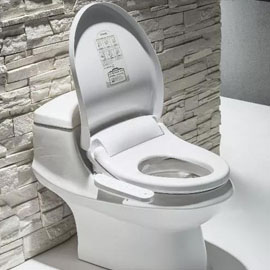
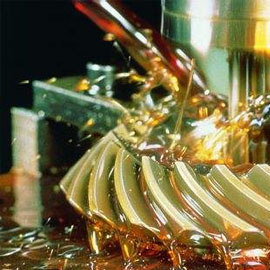
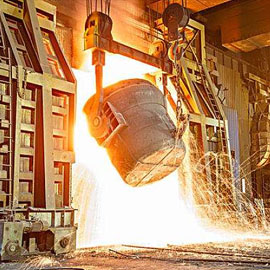
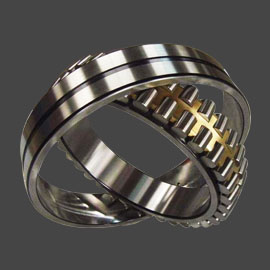
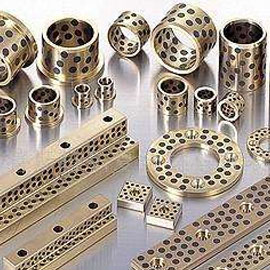
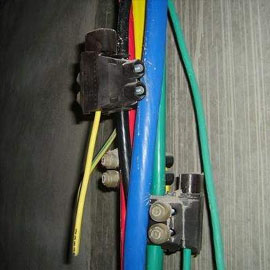
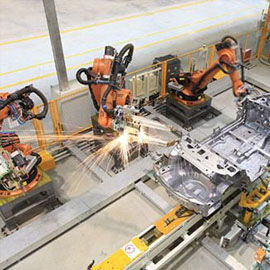









 86-13380181800
86-13380181800

 86-13380181800
86-13380181800